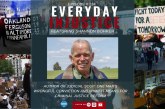

We have been talking about Aggie Research Campus (ARC) for months already, but until this past week we had not had an official application to look at. There remains a lot to look at in the next several months, but the plan is starting to take shape. Here are some quick thoughts I have on key portions.
Workforce housing – as the project notes: “Include a variety of workforce housing units, diverse in both size and affordability, designed to meet the needs of the innovation center employees, further spur collaboration and technology start-ups, create a hive of activity with people living and working on-site, and thereby reduce project-related vehicular trips.”
Housing is perhaps the most controversial part of this proposal. But other than the early promise that there would not be housing – as included in the RFEI (Request for Expressions of Interest) – is there really a good reason not to have it? We have heard from experts that having housing – especially during a time of housing crisis and in a community where lack of affordable housing is the number one issue – seems essential to the success of any commercial project.
The EIR, such as it was, showed a reduced carbon footprint with housing. You can argue there may not be enough housing here, but unless you’re actually opposed to any project, it is hard to argue for a project and no housing.
This is not a housing project with some commercial – it is a commercial project with high density housing.
How high a density? Thirty dwelling units per acre. That’s not a bunch of single-family homes with a small commercial in the middle (a la Cannery). This is 2.6 million square foot commercial project with 850 units of housing.
with 850 units of housing.
Will there be affordable housing? The description notes that there will be a variety of affordability, but affordable housing both large and small “a” will be a central part of this project.
As the description notes: “The housing is planned to include a variety of mixed-use, rental, and for-sale residential options catering to the needs and demands of innovation center employees.”
However, “the housing at ARC will not be restricted to employees only but will, consistent with Fair Housing Act requirements, be available to the community at large.”
Thus they are not planning to restrict the housing, but the housing will be designed to meet the needs of employees. They don’t discuss plans to make it more likely that employees will inhabit the units – other than that the timing of the building of those units will coincide with the creation of a nonresidential development (see below).
Here again, they seek to “[d]evelop a strategic mix of employment and residential uses on-site, introduced in phases to maximize utility, to ensure that the Project does not detrimentally impact the jobs/housing balance in Davis. The mix of uses will allow employees at the innovation center to live within walking distance of work, thereby minimizing vehicular trips, reducing commutes and reducing project-related greenhouse gas (GHG) emissions.”
Phasing – It is important to note that the project itself is expecting a 20- to 25-year build out. That might be optimistic, but that gives the community a sense of the scale of this project. There isn’t going to be a huge amount of infrastructure and employees plopped down on day one.
The housing will be phased as well, with the idea being that they want to create the need for housing first, and then build the housing.
Thus: “Housing will be permitted at the ARC site at a ratio of one unit for every 2,000 square feet of nonresidential development. The goal, if possible, is to time the availability of the homes to be concurrent with the creation of the jobs so that it maximizes the likelihood that employees at the Campus will occupy the units thereby maximizing the environmental benefits of including housing at ARC.”
This means that they will time housing to coincide with the availability of non-residential space. And remember, they are not likely to simply build the non-residential space. They will build that space out as the demand is created by commercial entities wishing to reside in the space.
They anticipate four phases whereby in the first three they build 270, 350 and then 230 housing units.
Hotel – This is a big thing for me, the inclusion of a hotel/conference center. The city of Davis almost has a new hotel across the street – the Marriott – completed. They have broken ground on the Hyatt House. But the proposed Embassy Suites on Richards is now downsized to the Richards Hotel, and gone is the hotel/conference center.
There are those who will argue that hotel/conferences centers are losing propositions. The problem we have in Davis os we lack the space to host a major conference. Even something as small as 500 attendees is a challenge. We have also lacked the hotel space to accommodate them in town – that means any time we have things like conferences or even soccer tournaments, people are using hotels in Dixon and Woodland, leaking TOT (transient occupancy tax).
Having a hotel/conference center can become a big asset for the community as a whole, to host events and prevent TOT leakage.
Traffic – next to housing, traffic seems to be the biggest concern that people have. I agree traffic will be a problem on Mace Blvd. It is a problem now. It will be a problem in ten years. It is going to be a problem no matter what we do.
I don’t see another logical landing spot for a research campus and so I think we have to bite the bullet here, taking as many steps as possible to reduce traffic.
One reason for the traffic on Mace is that people are using it as a cut-through due to congestion on I-80. The extent to which two things can be improved on I-80 – lane reduction at UC Davis and back up onto the causeway – the better that flow will be, but both are well out of our hands.
Onsite housing has been included, in part as a way to reduce the need for offsite vehicular trips.
Moreover, reducing the need for people to go to Sacramento and the Bay Area for work could help reduce some of the in-town traffic.
Parking and Transportation – A reasonable question is how much planning can reduce car trips. Obviously, even at 850 residential units, that is only a fraction of the expected number of employees at full buildout.
They note that there is a nearby Yolo Bus park and ride lot, which will have an improved pedestrian connection to the site, and they will provide dedicated Unitrans stops, a terminus for a dedicated shuttle between the train station and the main UC Davis Campus, and dedicated areas for rideshare and bikeshare services.
They also plan to have significant onsite bicycle and pedestrian features.
Parking will include 4340 spaces – but 100 of those are for the hotel and 850 for housing. So, for the innovation center itself, there will be just under 3400.
The anticipation is that they will be considerably below the municipal code average of spaces.
It will be interesting to see – will the project be attacked for having too much parking (3400 spaces for commercial uses) or not enough parking (it’s not like they can park and walk reasonably)?
Personally, on this front, I would like to see some more innovative solutions to transportation that better takes people out of their vehicles and delivers them on site.
—David M. Greenwald reporting







So yesterday, David brought up the issue of Schilling leaving, as a reason to support ARC. While simultaneously noting that there’s nothing to prevent other companies from pursuing “fire sale prices” at locations outside of Davis – regardless of what’s built in Davis.
David also consistently ignores the fact that when one business leaves, it provides an opportunity for another business to occupy the space (assuming that there’s actual commercial demand).
David also noted that falling oil prices likely delayed Schilling’s departure. So, I decided to look into what Schilling actually does. Turns out “ . . . much of Schilling Robotics’ business comes from offshore oil drilling and exploration.”
https://localwiki.org/davis/Schilling_Robotics
Now, perhaps such a facility would have been “appropriate” at a freeway-oriented development with more than 4,300 parking spaces (such as ARC). But, the nature of Schilling’s business (along with David’s preferred location for it) doesn’t seem to “jive” with David’s (or the city’s) concern regarding global warming.
Then there’s the fact that ARC wouldn’t even provide sufficient housing for its own workers, while David (and others) repeatedly state their concerns regarding a “housing shortage”.
This reminds me of the situation with WDAAC, in that David has a rather unique ability to “overlook” his stated concerns, when it comes to development proposals.
Also note the “changing ownership” (described in the article above) of Schilling, over the years, and that the company has (twice) been sold to other interests (which appear to be corporate conglomerates). Today, it is owned by FMC Technologies.
Does anyone believe that corporate owners give a damn, regarding whether or not this company remains in Davis? Wouldn’t lease prices within 10 miles of its current location be a MUCH bigger consideration, for these owners?
As I was researching/typing this, I just came across the following article, as well. This article notes that Schilling paid a $2.5 million penalty, in 2016 (regarding “overstated profits”). Which does cause one to question the amount of “fiscal profit” that this company actually generates. The article also reiterates that the focus of the company’s business, on oil and gas exploration:
https://www.bizjournals.com/sacramento/news/2016/10/21/parent-of-davis-based-company-agrees-to-sec-fine.html
In any case, it is certainly an odd situation in which development activists tout “fiscal profits” as a reason to support more development. As if companies and new workers want to locate in a given city, for the purpose of paying-0ff an existing city’s bills.
Below is a photo of Schilling’s current location, which shows UCD occupying part of the building. If this is still the case, then UCD is occupying space that would otherwise generate tax revenue for the city:
https://www.google.com/maps/uv?hl=en&pb=!1s0x80852bd1024b9e67:0x48ab8563c061cf3a!2m22!2m2!1i80!2i80!3m1!2i20!16m16!1b1!2m2!1m1!1e1!2m2!1m1!1e3!2m2!1m1!1e5!2m2!1m1!1e4!2m2!1m1!1e6!3m1!7e115!4shttps://lh5.googleusercontent.com/p/AF1QipOEZpz_e8QlVjeiToK1iOf3_bRQtlExTGnQYkkg%3Dw213-h160-k-no!5sschilling+robotics+-+Google+Search&imagekey=!1e10!2sAF1QipOEZpz_e8QlVjeiToK1iOf3_bRQtlExTGnQYkkg&sa=X&ved=2ahUKEwie3K7sjpzlAhUUnZ4KHWonAEMQoiowCnoECAoQBg&cshid=1571068731914848
Also, from the 2016 article above, regarding the fine that Schilling’s parent company paid:
Not intended as a “knock” on Shilling, but David is the one who consistently brings up this company as a probable “loss” for Davis. Also conveniently ingnoring the fact that MRIC was given a green light to proceed with a commercial development a couple years ago. However, the MRIC developers declined to pursue this.
This is absolute insanity, and seems to be made to quell anti-growth protests, yet will satisfy no one nor meet any needs. We have a vacancy rate of below 1% NOW. Why wait on the housing element? People who work there can’t be forced to live there or vice-versa, so why the charade? Just build the housing right away! This sort of stupidity could actually cause me to vote against the project. J*sus Chr*st!
Don is correct, in that the Vanguard continues to initiate “discussions” (in the form of straight-out repeated, one-sided advocacy) regarding the same topic. And, will likely continue to do so.
The proposal itself has changed significantly, since the interest regarding innovation centers was first examined. The MRIC developers declined to pursue the opportunity to pursue a commercial development, and have since drastically changed their proposal. As did the owners of 2-3 other innovation center sites, which have since been converted to housing.
Ron O.: you have nailed it here. Proponents of the project keep saying there has already been discussion of this. But there hasn’t really been. It has just been the voices of the proponents repeatedly pushing it to such a degree that they just hear their own echoes and mistake it for a conversation. There was never a proper vetting of the previous analysis that was done for an earlier iteration of the project. Where is the stepping back and looking at our overall community goals and preferred approach to achieving them? Project proponents are just trying to squelch debate.
Richard McCann and Mark West specifically recently criticized citizens calling for an open and transparent discussion of the project. They questioned their motives and said that if those citizens REALLY cared they would have previously gone to some mythical meeting of a Commission that never even happened in the first place. Ironically, Mark West’s sanctimonious pronouncement that this is “The Process” was exactly right–it is the voice of moneyed interests trying to obscure what has actually taken place.
Interestingly enough – that’s exactly what some proponents did, regarding the initial proposal. Arguing that Davis needs sufficient commercial development to support its existing housing.
The proponents arguments seem to “shift” to match the latest proposal. These shifting arguments demonstrate how some just want more development, in whatever form or shape that’s proposed. It’s also a demonstration of what will occur if this proposal is somehow actually approved, in that development activists will then start working on the next parcel, and the next one . . .
Facilitated by SACOG future requirements that would likely result from ARC.
Actually, Davis needs sufficient commercial development to support its fiscal needs. Davis doesn’t have enough workforce housing – the one thing that Rik Keller gets right – and we need more housing regardless. This is just a warped rendition of history that doesn’t comport with what actually happened. The only reason housing wasn’t included originally is that many people believe it would doom the project. The reason housing is included now is that two Measure R votes suggest otherwise.
Not true. There were some who argued that Davis needs more commercial development to support its existing housing. In fact, that was the primary reason for looking at peripheral innovation center sites in the first place.
I no longer believe anything that development activists claim. At one point, I believed some of their arguments.
The developers are hoping that the most recent Measure R votes will translate into support for their proposal. But even more to the point, there doesn’t seem to be sufficient commercial demand to actually make the development viable, unless housing is included. Which essentially undermines the initial “justification” for such proposals.
I would suggest a few things:
First, look at the public record – all of this stuff is in it.
Second, some were arguing doesn’t mean that was the reason for why it was done.
Craig: I’d suggest you go ahead and reference/cite what you’re referring to. In fact, this is an opportunity for you to “make the case” for the cause that you support.
But again, let’s hear how the inclusion of housing (which usually generates long-term fiscal COSTS for the city) fits into that picture.
(For the moment, we can leave out the other/future housing projects that would likely result from this development.)
Ron O. Stated “There were some who argued that Davis needs more commercial development to support its existing housing.”
This is true of the previous EIR for the project that excluded UC Davis employment from its analysis and thus came to the bizarre conclusion that Davis has a jobs/housing balance tilting massively in favor of housing. The reality is that Davis is a net jobs exporter (to commuters from other cities) and has a jobs/housing balance tilted in favor of jobs compared to SACOG regional averages.
Rik: That’s right, although some have argued that (since UCD pays no taxes), additional commercial development was needed to support existing housing. Pretty sure that this was a large part of the reason for the initial exploration of a peripheral innovation center.
After all – as you note – Davis is already a net IMPORTER of commuters, due to jobs at UCD. So, a “shortage” of local jobs simply isn’t supported by facts, nor would it constitute a coherent argument in favor of the development.
So far, I’ve seen no coherent argument whatsoever (or any references/citations), which explains how this latest proposal (which would simply extend the “imbalance” of housing vs. commercial development) supports the initial claimed goal. Also known as an “inconvenient truth”, to borrow a phrase.
I’ve invited Craig to respond with references/citations regarding his response, but haven’t heard anything back from him so far.
Unless one simply supports more housing and more jobs for non-Davis citizens. Thereby defeating the claimed purpose.
Also known as sprawl.
Rik: You’ll also probably recall that I repeatedly (and accurately) predicted that the developer would pursue housing at the site, shortly after they withdrew their commercial proposal.
Despite David’s repeated “reassurances” that the developer was not interested in pursuing housing, as I recall.
That’s not really accurate as I recall the history. First, I never assured anything. Second, at one point I predicted that there wouldn’t be housing but that wasn’t based on an assertion about interest from the developer. Third, circumstances changed last year with the passage of two housing measures and the rise of the housing issue as the biggest in Davis. You’re failing to take into account timing and changing circumstances and overstating my comments.